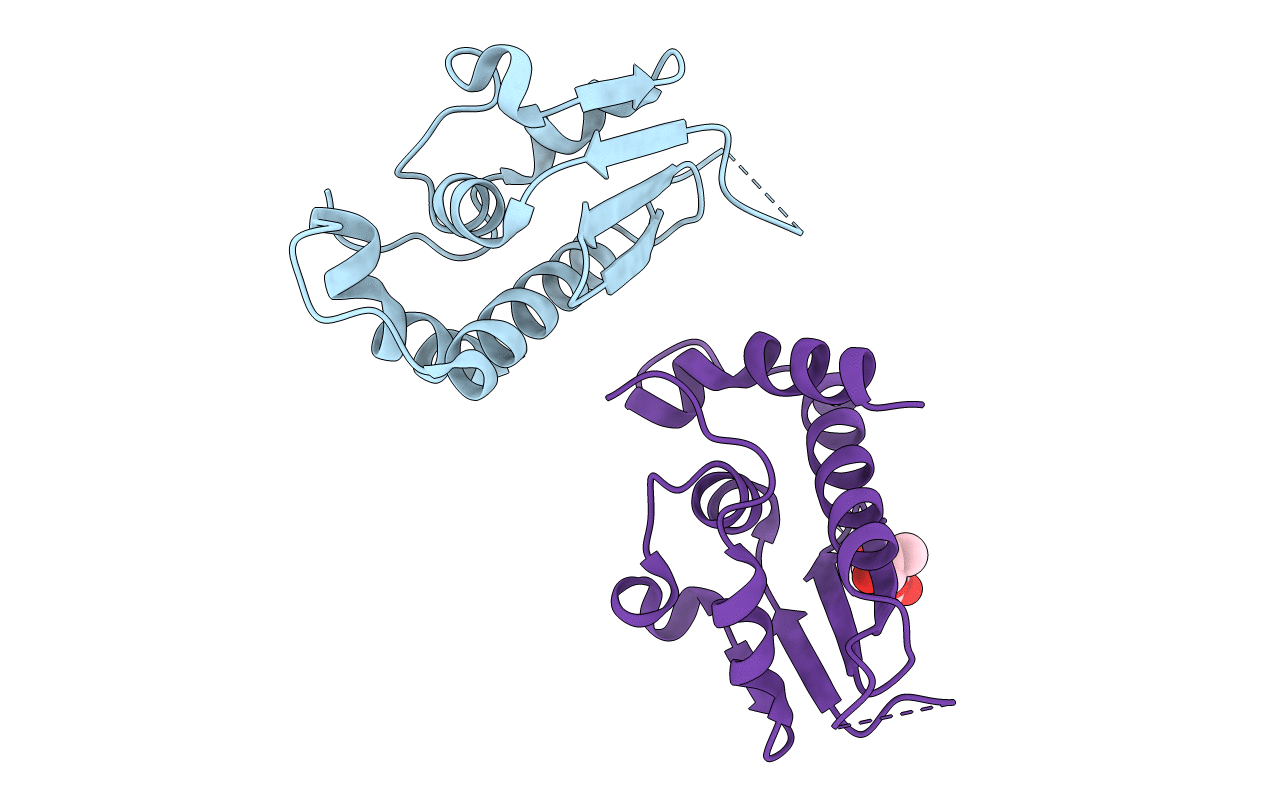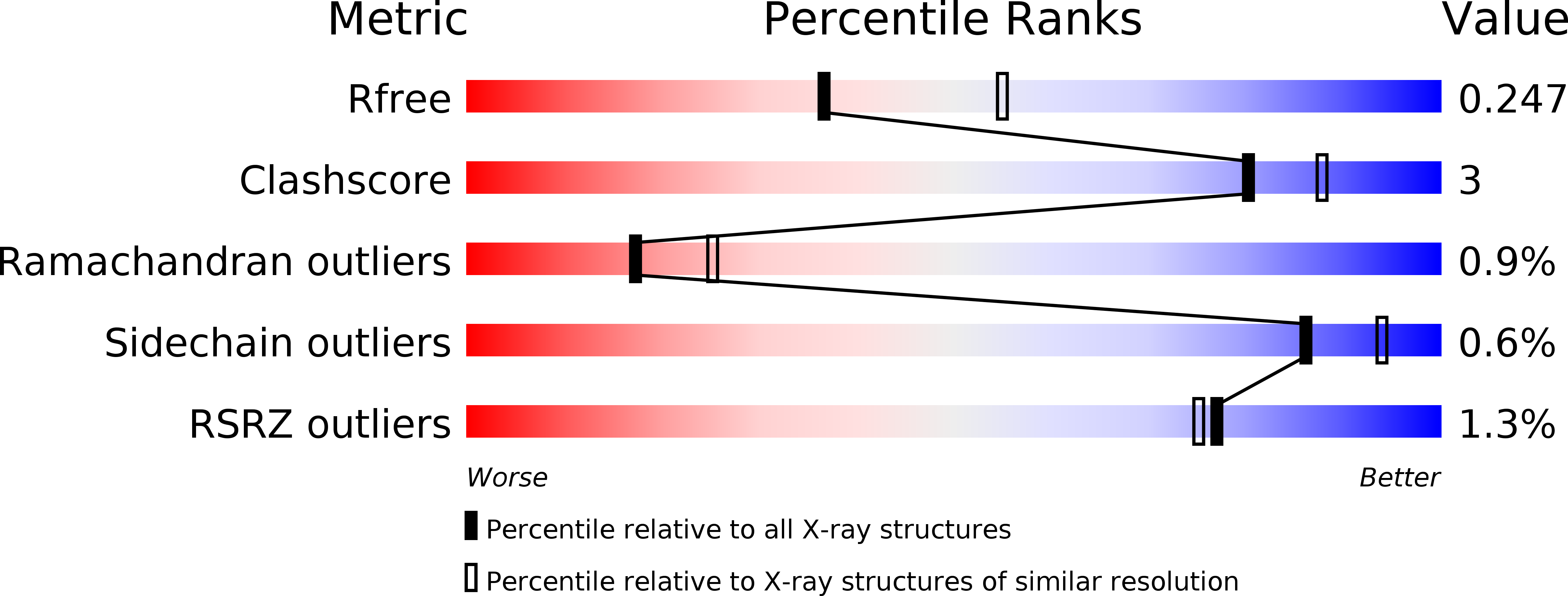
Deposition Date
2013-11-28
Release Date
2014-09-10
Last Version Date
2024-02-28
Entry Detail
PDB ID:
4NSS
Keywords:
Title:
A structural and functional investigation of a novel protein from Mycobacterium smegmatis implicated in mycobacterial macrophage survivability
Biological Source:
Source Organism:
Mycobacterium smegmatis (Taxon ID: 246196)
Host Organism:
Method Details:
Experimental Method:
Resolution:
2.40 Å
R-Value Free:
0.22
R-Value Work:
0.18
R-Value Observed:
0.19
Space Group:
P 43 21 2


